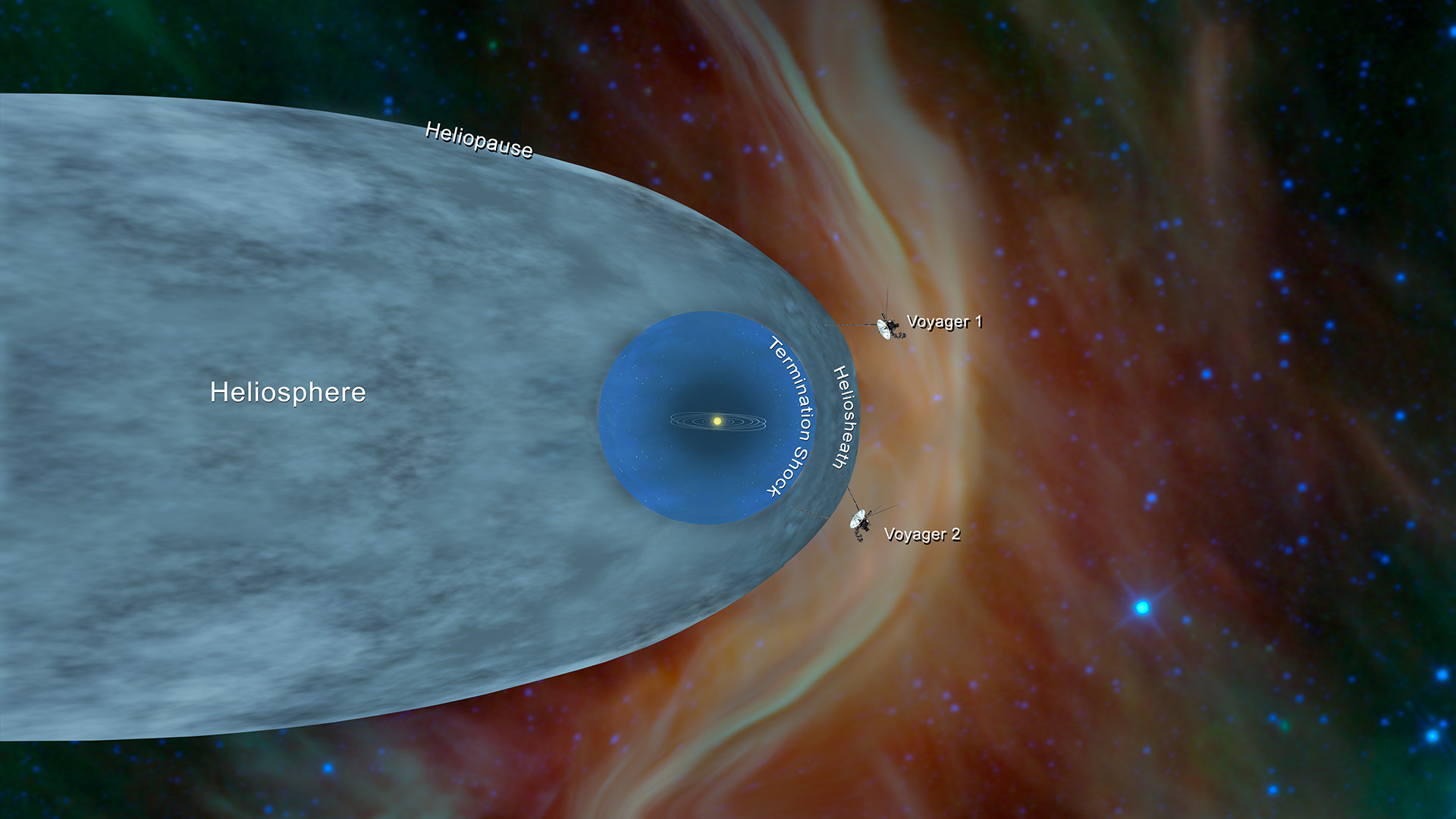NASA engineers are turning off two instruments to ensure that the twin spacecraft, Voyager 1 and Voyager 2, can continue exploring space beyond the limits of the solar system.
To save energy for further interstellar exploration, mission engineers at NASA’s Jet Propulsion Laboratory (JPL) deactivated Voyager 1’s cosmic ray subsystem experiment on Feb. 25. On March 24, they will shut down the low-energy charged particle instrument onboard Voyager 2.
Launched in 1977 and carrying the same suite of ten instruments, Voyager 1 and Voyager 2 reached interstellar space in 2012 and 2018, respectively. It is little wonder that Voyager 1 and Voyager 2 are operating on dwindling power supplies. After all, the two spacecraft have traveled a combined 29 billion miles to become the farthest human-built objects from Earth.
“The Voyagers have been deep space rock stars since launch, and we want to keep it that way as long as possible,” Voyager project manager at NASA Jet Propulsion Laboratory Suzanne Dodd said in a statement. “But electrical power is running low. If we don’t turn off an instrument on each Voyager now, they would probably have only a few more months!”
Related: NASA’s Voyager 1 probe swaps thrusters in tricky fix as it flies through interstellar space
Life beyond the solar system
Both Voyager spacecraft have a power system based on generating electricity from the heat emitted by the decay of a radioactive isotope of plutonium.
This radioisotopic power system loses around 4 watts of power from Voyager 1 and Voyager 2 each year. In the 1980s, several instruments aboard both spacecraft were turned off. This was because the Voyager twins had both completed their investigation of the solar system’s giant planets, which boosted the longevity of both probes.
To conserve this power, NASA operators turned off Voyager 2’s plasma science experiment in October 2024. The experiment aimed to measure how much plasma flows past it and in what direction. The Voyager 2 instrument had been collecting limited data in the years before its shutdown due to its orientation of Voyager 2 in relation to the flow of plasma beyond the solar system.
Voyager 1’s own plasma science instrument stopped working correctly in 1980 and was turned off in 2007 to preserve power.

Most recently, NASA shut off Voyager 1’s cosmic ray subsystem at the end of February. The data from the suite of three telescopes designed to study cosmic rays was integral in the Voyager science team’s determination that Voyager 1 had exited the heliosphere, the sun’s sphere of influence at the edge of the solar system.
Shutting down at the end of March is Voyager 2’s low-energy charged particle instrument, the role of which is to measure the various ions, electrons, and cosmic rays originating from the solar system and our galaxy.
“The Voyager spacecraft have far surpassed their original mission to study the outer planets,” Voyager program scientist Patrick Koehn said. “Every bit of additional data we have gathered since then is not only valuable bonus science for heliophysics, but also a testament to the exemplary engineering that has gone into the Voyagers — starting nearly 50 years ago and continuing to this day.”
The fact that the Voyager spacecraft are the only two human-made objects to make it to interstellar space means that the data they collect is unique. Thus, the decision to switch off any instruments on either Voyager 1 or Voyager 2 isn’t taken lightly. Shutting down these two instruments should grant both spacecraft another year of exploration before more instruments have to be turned off.
Both spacecraft have three operational instruments, dropping to two in 2026. It is hoped that Voyager 1 and Voyager 2 will carry one operational instrument into the 2030s. Unforeseen circumstances could arise and change these plans, though.
“Every minute of every day, the Voyagers explore a region where no spacecraft has gone before,” Voyager project scientist at JPL Linda Spilker said. “That also means every day could be our last. But that day could also bring another interstellar revelation.
“So, we’re pulling out all the stops, doing what we can to make sure Voyagers 1 and 2 continue their trailblazing for the maximum time possible.”
Originally posted on Space.com.
